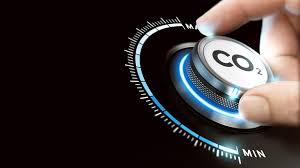
With these seven home appliances you reduce your CO2 emissions considerably
2. Dezember 2019With these seven home appliances you reduce your CO2 emissions considerably
Berlin, 2.12.2019
Smart Homes – these are contemporary, practical devices that make everyday life more comfortable and will become increasingly popular in the future because of their environmental friendliness. Here are seven smart home appliances that can help you reduce your CO2 emissions and power consumption.
1. intelligent sensors
When it comes to saving energy and avoiding costly repairs, the numerous intelligent home sensors on offer are the first choice. They can be placed on any device that consumes electricity. From now on, they start measuring and monitoring. After a short time, you will be able to enjoy the reduction in energy consumption. Where should they be placed? Primarily where the most electricity is wasted. For example, children’s rooms and play areas where the lights often remain switched on accidentally. Sensors on windows and doors alert you if they remain open – this saves heat and cooling losses in the summer and winter months. Leak sensors help you reduce water consumption by alerting you to drops. You also save building materials, time and money by detecting water damage and flooding early and reducing your CO2 footprint.
2. intelligent thermostats
By using intelligent thermostats, you can save the most energy because heating and cooling your home accounts for about half of your energy consumption. What is the secret of these smart appliances? You remember your daily routines and temperature preferences. They then make real-time adjustments to optimize energy consumption. You lower temperatures during your absence and raise them slightly when you get home from work. Short-term temperature changes upwards or downwards – waste that costs a lot of money – are then a thing of the past.
3. intelligent light bulbs
Intelligent LED light bulbs are also an effective way of reducing energy consumption. Because LED incandescent lamps also have a service life about two to four times longer than a conventional lamp, fewer lamps also need to be recycled.
4 Intelligent sprinkler systems
You water your lawn according to the principle: it must be green. This can be very expensive with changing climatic conditions. How about intelligent sprinklers? The advantage: they first learn your individual irrigation needs and relate them to a number of environmental factors. They then irrigate according to different rules. Based on local weather forecasts, rain probability, temperature and humidity, they always ensure optimum water performance. Some models even take into account the type of lawn, soil conditions and sunlight. Water conservation is also a good way to reduce your CO2 footprint.
5. intelligent shower head
How long do you usually shower? You have never measured this before? On average it should be eight minutes. How much water then flows through the shower head? Who knows? Few. Intelligent shower heads draw your attention to how much water you consume. Some of them are operated with water pressure. The advantage: they also save the battery.
6. smart plugs and socket strips
Use an intelligent plug on your refrigerator to measure energy consumption. Smart socket units are particularly recommended, as smartphones and computers are never switched off completely. Even when they’re „off,“ they still draw small amounts of power. Taken together, they waste millions of kilowatts per year – completely useless. Smart Power Strips completely detect and interrupt power, reducing your power consumption.
7. smart home energy monitors
Smart home energy monitors also help to reduce household energy consumption by showing owners where their kilowatts of energy go. These intelligent watt monitors connect to your electricity meter or control cabinet and display the cost and amount of energy consumed in real time. Some models even estimate the number of greenhouse gases emitted.


